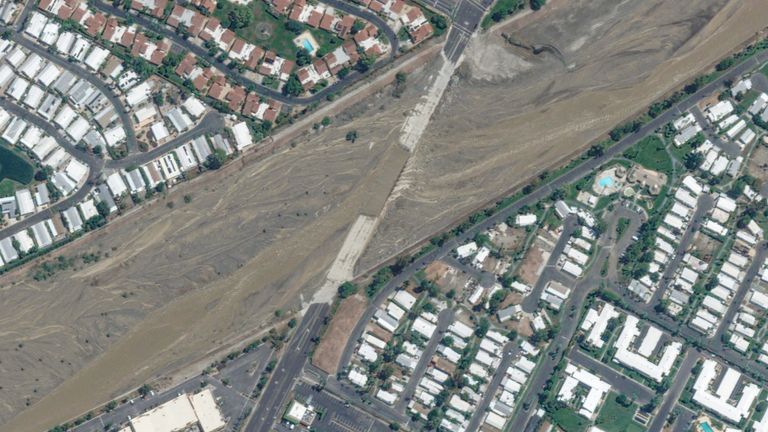Impact of Tropical Storm Hilary in California revealed in satellite pictures


The extent of the damage after a rare tropical storm ripped through southern California has been revealed in dramatic photos taken from space.
So far, no deaths or serious injuries have been reported in the US state, though officials warned that risks remain, especially in the mountainous regions where the wet hillsides could unleash mudslides.
Crews have been working to dig roads, buildings and care home residents out of the mud across a wide swathe of the southwest in the wake of Tropical Storm Hilary.
It is the first such storm to hit the south of California in 84 years, heading north from there towards the Rocky Mountains.
Use the sliders on the images below to see satellite shots before and after damage caused by the storm – with the amount of mud and damage to roads noticeable from above.
The National Hurricane Centre in Miami said Hilary had lost much of its force as it headed to the Rocky Mountains, but warned that “continued life-threatening and locally catastrophic flooding” was expected in parts of the region.
Forecasters said the threat for flooding in states farther north on Monday was highest across much of southeastern Oregon into the west-central mountains of Idaho, with potential thunderstorms and localised torrential rains on Tuesday.
Read more:
Three-year-old shoots and kills baby sister in California
‘Aggressive’ California sea otter seen stealing surfboards

In one dramatic scene, rescue officials in the desert community of Cathedral City, near Palm Springs in California, drove a bulldozer through the mud to a swamped care home and rescued 14 residents by scooping them up and carrying them to safety, Fire Chief Michael Contreras said.
Advertisement
“We were able to put the patients into the scoop. It’s not something that I’ve ever done in my 34 years as a firefighter, but disasters like this really cause us to have to look at those means of rescue that aren’t in the book and that we don’t do every day,” he said.

